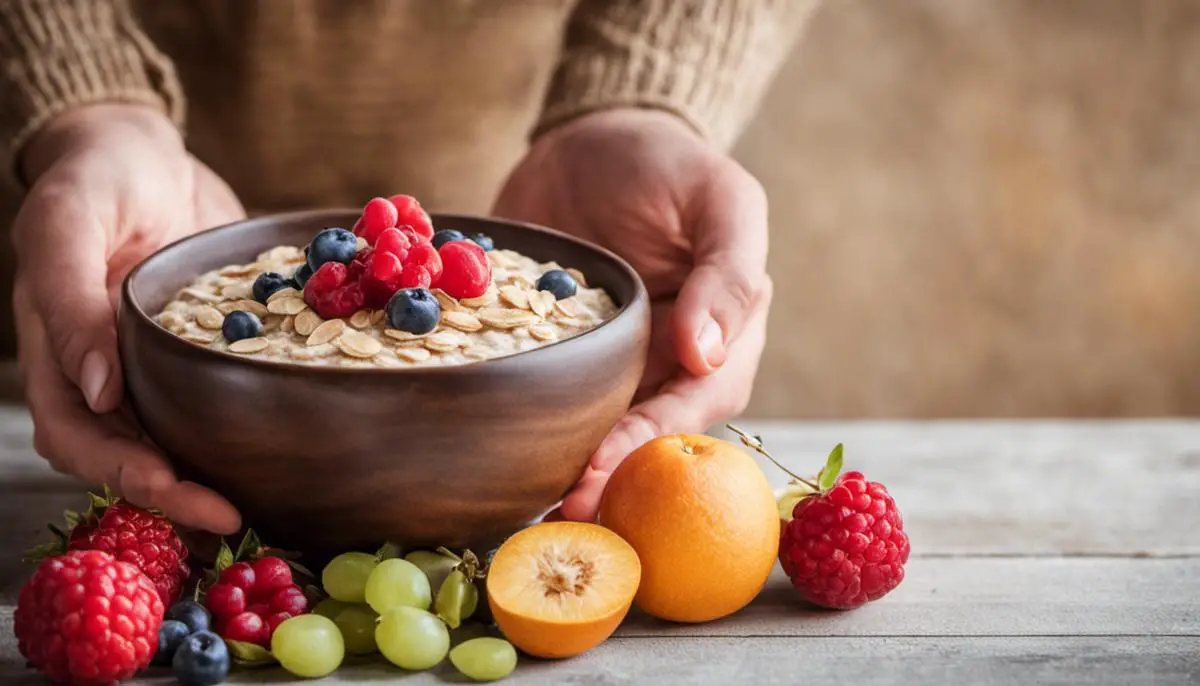Breakfast is known as the most significant meal of the day, and when you’re diabetic, it’s even more essential to fuel your body correctly. This kick-starts your metabolism and helps control blood sugar levels throughout the day. One of the key nutrients to incorporate in your breakfast is dietary fiber. As this article covers, fiber plays a vital role in managing diabetes by slowing the rate at which carbohydrates are broken down and sugar is released into the bloodstream. Bountiful high fiber breakfast ideas and recipes are explored within this article, alongside a discussion about the key differences between soluble and insoluble fiber and associated studies supporting their benefits. Furthermore, recognizing fiber-rich food ingredients is vital, alongside understanding potential side effects and precautions related to a high fiber diet.
Understanding the Role of Fiber in Diabetes Management
The Importance of High Fiber Breakfast for Diabetics
Having a high fiber diet is crucial to anyone managing their diabetes. Fiber plays a significant role in regulating blood sugar levels, maintaining heart health, and assisting with weight management. When it comes to breakfast, incorporating a sufficient amount of fiber can set the pace for stabilized blood sugar levels throughout the day.
Types of Fiber: Soluble and Insoluble
Fiber is broadly categorized into two types: soluble and insoluble. Soluble fiber dissolves in water, slowing down digestion by creating a gel-like substance. This process allows the body to absorb the sugar in your food slowly, preventing spikes in your blood glucose levels. Foods high in soluble fiber include fruits like oranges and strawberries, legumes, oatmeal, and nuts.
Insoluble fiber, on the other hand, does not dissolve in water. It adds bulk to your diet, helping prevent constipation and promote regular bowel movements. Foods high in insoluble fiber include whole grain bread, cereals, wheat bran, and vegetables like carrots and cucumbers.
Scientific Evidence on Fiber’s Role in Diabetes Management
Research supports the prominence of fiber in diabetes management. According to a study published in the Journal of Nutrition, a high fiber diet could reduce the risk of type 2 diabetes by up to 18%. Another study in the Archives of Internal Medicine reveals that those with diabetes could control their blood glucose better by increasing their intake of dietary fiber. An additional advantage is that high-fiber foods tend to be low in calories, assisting in weight control, a significant concern for many individuals with diabetes.
High Fiber Breakfast Options for Diabetics
There are ample ways to incorporate high fiber foods into your breakfast. A bowl of whole grain cereals with fresh fruit, such as berries or apples, packs a powerful fiber punch. Oatmeal topped with nuts, seeds, or peanut butter is another option high in both soluble and insoluble fiber. Whole grain bread with avocado or homemade almond butter offers an excellent source of fiber, while protein-packed chia seeds can be added to smoothies or yogurt. A spinach and mushroom omelette also offers decent fiber content. Consider incorporating legumes into your morning meal, perhaps in the form of a chickpea scramble or lentil patties.
As you consider adding more fiber to your diet, remember it’s crucial to also enhance your water intake. This change ensures that the fiber is effectively performing its necessary tasks. Please keep in mind to always consult with your healthcare provider or a registered dietitian before initiating significant dietary transitions.
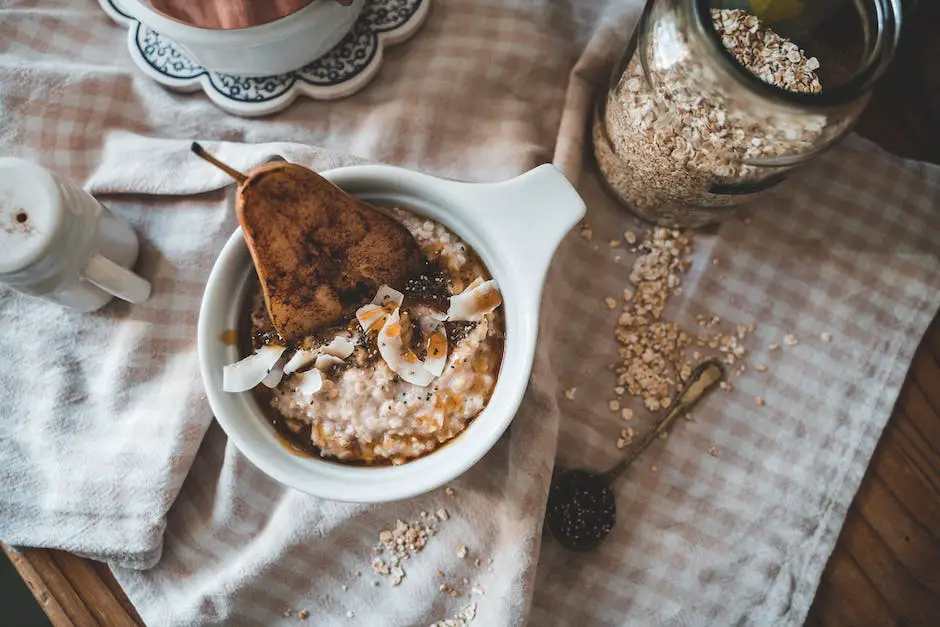
High Fiber Breakfast Ideas and Recipes
Understanding the Significance of High Fiber Breakfast for Diabetics
Fiber plays an instrumental role in a diabetes-friendly diet. It contributes to moderating sugar absorption within the body, which in turn, aids in regulating blood glucose levels. Paying special attention to breakfast, the day’s initial meal, becomes critical. Integrating high-fiber foods into the morning meal can help individuals with diabetes maintain their health throughout the day.
Oatmeal Topped with Berries and Nuts
Oatmeal is rich in fiber, particularly beta-glucan, a type of soluble fiber that slows digestion and helps regulate blood sugar. One serving of oatmeal is about 1/2 cup cooked, and it contains approximately 4 grams of fiber and around 150 calories. To enhance the fiber content, top the oatmeal with a handful of mixed berries and a tablespoon of nuts. Berries provide an additional 4 grams of fiber and nuts add around 3 grams.
Chia Seed Pudding
Chia seeds are tiny powerhouses of nutrition, boasting 10 grams of fiber per ounce. These seeds also have the ability to form a gel when soaked in liquid, making them ideal for a pudding-like breakfast dish. Soak three tablespoons of chia seeds in one cup of dairy-free milk overnight. In the morning, add some fresh fruits and nuts to increase the fiber content and add varying textures. This meal contains approximately 200 calories.
Whole Grain Toast with Avocado and Eggs
Whole grain bread contains about 3 grams of fiber per slice, and is low in calories at about 70-100 per slice. Spread mashed avocado on two slices for a monosaturated, healthy fat addition, and add a boiled egg for a protein boost. This simple, balanced breakfast contains roughly 6 grams of fiber and is about 300 calories.
Smoothies with Veggies and Fruits
Smoothies offer an easy, delicious way to pack nutrition into your morning. Start with a base of spinach or kale, and add berries, banana, and chia or flax seeds. All these ingredients are high in fiber. Using half a cup of spinach, one cup of mixed berries, half a banana, and two tablespoons of chia seeds creates a smoothie with around 16 grams of fiber and 200 calories.
Greek Yogurt with Berries and Flaxseeds
Greek yogurt is packed with protein and can serve as the base of a high-fiber breakfast. Add a handful of mixed berries and a tablespoon of ground flaxseeds which provide additional fiber. A standard serving of Greek yogurt is one cup, and when combined with the berries and flaxseeds, this breakfast provides approximately 6 to 8 grams of fiber and around 200-250 calories.
If you’re seeking a way to manage your blood sugar levels while remaining healthy and satiated, incorporating high-fiber breakfast meals into your diet can be a beneficial decision. These types of meals not only help control blood sugar but also foster a sense of fullness, promoting healthier weight maintenance.
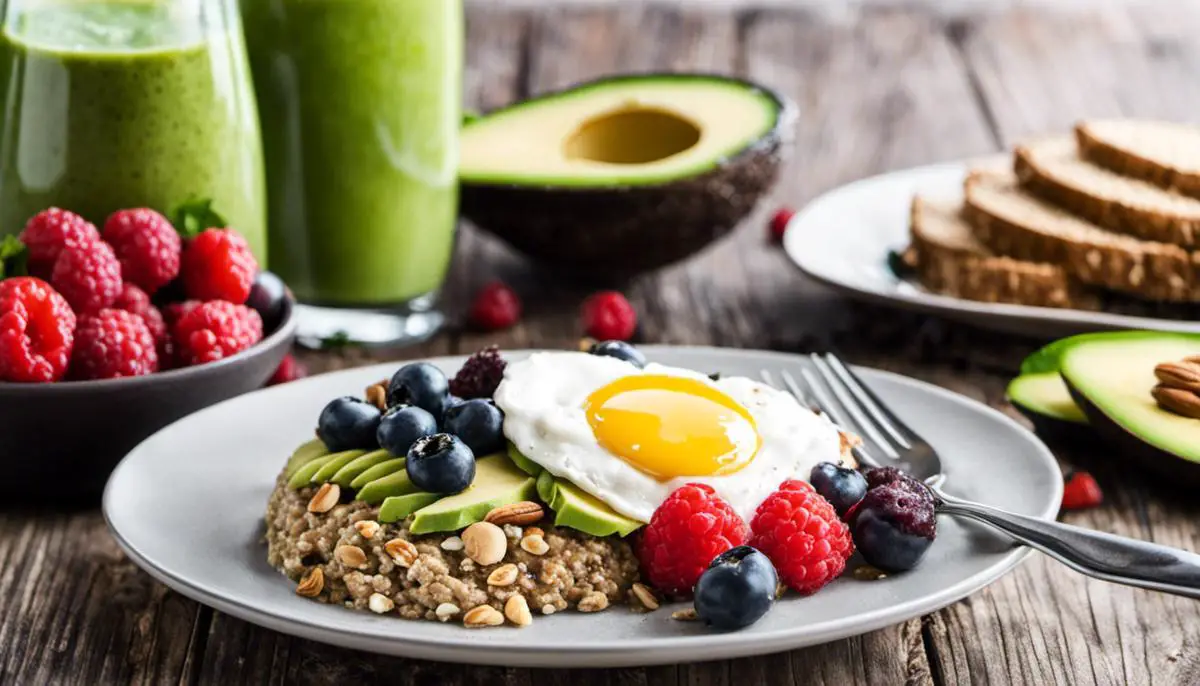
Recognizing Fiber-Rich Food Ingredients
The Crucial Role of Fiber in Diabetes Management
Understanding how diabetes affects the body is key in managing the condition effectively. With diabetes, the body either fails to produce sufficient insulin, or it becomes unable to use the insulin it does produce efficiently. This leads to high levels of sugar in the bloodstream. Consuming a diet rich in high-fiber foods can significantly help regulate these levels. This is because dietary fiber, particularly soluble fiber, works to slow the absorption of sugar in the bloodstream. This reduces the potential for blood sugar spikes and subsequent crashes. Furthermore, foods high in fiber can help you feel fuller for longer, aiding in weight management—a crucial part of controlling type 2 diabetes.
List of High Fiber Breakfast Choices
Adding high-fiber foods to your breakfast can start your day on a healthy note. Here are some options to consider:
- Oats: Oats are rich in soluble fiber, offering around 2-4 grams per half-cup serving. They help control blood sugar and cholesterol levels.
- Berries: Berries, such as strawberries, raspberries, and blackberries, are high in fiber and low in carbohydrates, making them a great choice for diabetics.
- Whole grains: Whole grain bread and cereals are excellent high-fiber breakfast choices. Look for bread and cereals that list whole grains or 100% whole wheat as the first ingredient.
- Chia seeds: Just two tablespoons of chia seeds provide 10 grams of fiber, which can be easily added to your morning smoothie or oatmeal.
- Lentils and Beans: Lentils and beans are rich in fiber and protein. A lentil or bean soup can be a warm and comforting way to start the day.
- Nuts and Seeds: Almonds, flaxseeds, and sunflower seeds are all loaded with fiber. Sprinkle them on your oatmeal or yogurt for added crunch and nutrition.
- Avocado: Avocados are high in fiber and heart-healthy unsaturated fats. They can be enjoyed sliced on toast or scrambled with eggs.
Portion Control Tips for Diabetic Breakfast with High Fiber
Even while incorporating high-fiber foods into your breakfast, portion control is vital for maintaining a balanced diet and proper blood sugar levels. Here are some tips:
- Measure Your Servings: Use measuring cups or a food scale to ensure accurate portion sizes.
- Smaller Plates: Using smaller plates can help control portion sizes and prevent overeating.
- Half Plate Rule: Fill half your plate with high-fiber, non-starchy vegetables, a quarter with proteins, and a quarter with whole grains or starchy vegetables.
- Beware of Packaged Foods: Even if it’s labeled as high-fiber, packaged meals often have additional sugars and fats. It’s better to eat whole foods whenever possible.
- Keep Track: Use a food diary or a phone app to log your meals, keeping track of both carbohydrate and fiber intake to make sure you’re maintaining balance.
Integrating high-fiber foods into your diet is a key aspect of managing diabetes, particularly when combined with careful portion control. It’s always important to remember to consult a healthcare provider or registered dietitian before drastically altering your diet, especially if you’re living with a chronic condition like diabetes.
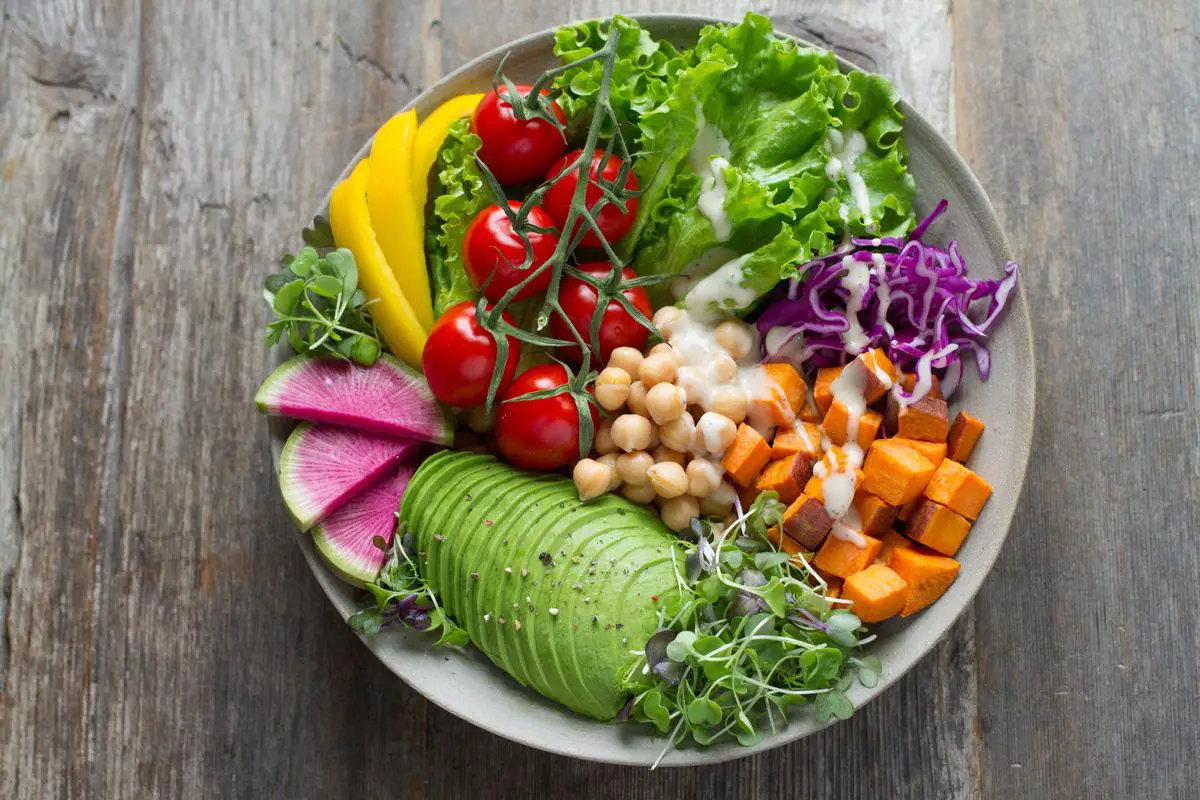
Photo by annapelzer on Unsplash
Precautions and Potential Side Effects
Digesting the Benefits of a High Fiber Diet
Some people may experience minor adverse effects such as bloating or gas when initially increasing their fiber intake. This is simply your body adapting to the higher fiber content. To minimize discomfort, it’s recommended to integrate fiber into your diet gradually, rather than making an abrupt change. Consuming plenty of fluids also alleviates these effects, as they facilitate the movement of fiber through your digestive system.
Precautionary Measures for Diabetics
When planning high fiber breakfast meals, diabetics need to consider their individual food tolerances. Some high fiber foods like certain fruits could have a higher glycemic index and lead to spikes in blood sugar levels. It’s recommended that diabetics pair fiber-rich foods with sources of protein or healthy fats to keep blood sugar steady.
Importance of Regular Monitoring
Regular monitoring of blood glucose levels before and after meals is essential. It would help diabetics understand their bodies’ response to different foods and modify their diet plan accordingly. Regular consultation with health-care providers or dieticians can also be beneficial in managing diabetes effectively.
Potential Interactions with Medication
Diabetics should also be aware that a high fiber diet can potentially interact with medications like Metformin and insulin. Dietary fiber slows the absorption of sugar into the bloodstream, which helps regulate blood sugar levels. However, when combined with diabetes medication, it could potentially lead to hypoglycemia or low blood sugar levels. Thus, regular monitoring and medication adjustments may be required.
Balanced Approach to Diet
In addition to fiber, it’s crucial for diabetics to have a balanced diet that includes a variety of foods. Despite the benefits of a high fiber diet, it should not be used as a solitary tactic in managing diabetes. A high fiber breakfast for diabetics should ideally combine sources of fiber with lean proteins and healthy fats to facilitate slower digestion and maintain steady blood sugar levels throughout the day.
Physical Activity: Key Part of Diabetes Management
Finally, physical activity is a key component of diabetes management, complementing dietary strategies. Regular exercise, in conjunction with a high fiber diet, can help diabetics maintain a healthy weight and improve insulin sensitivity, thereby better managing their blood sugar levels.
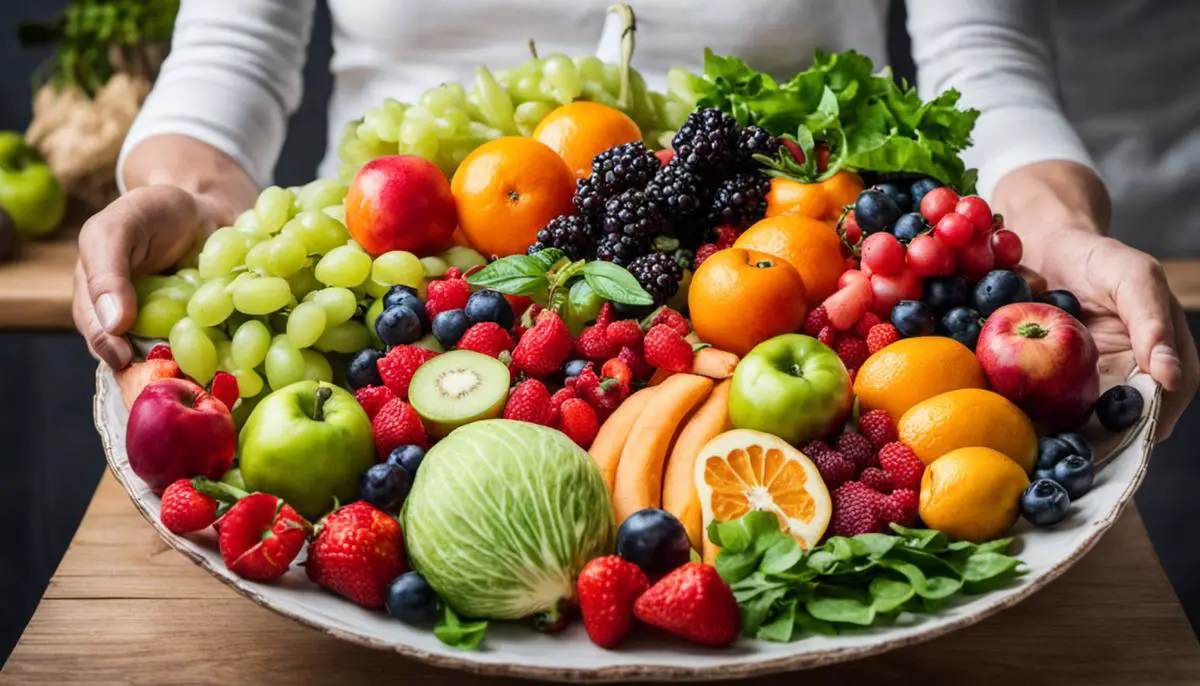
While diabetes might pose nutritional challenges, a well balanced high fiber breakfast can play a critical part in managing your blood sugar levels. This not only provides essential energy to start your day but can also play a role in preventing further health complications. With tasty recipes, a bounty of fiber-rich ingredients to choose from and potential side effects well armed in your knowledge bank, you can transform your breakfast experience to not just suit your taste buds, but more significantly to suit your health needs. As always, personalizing the guidance provided here to your individual circumstances, with advice from your dietitian or healthcare provider, will ensure the best dietary approach for your diabetes management.
